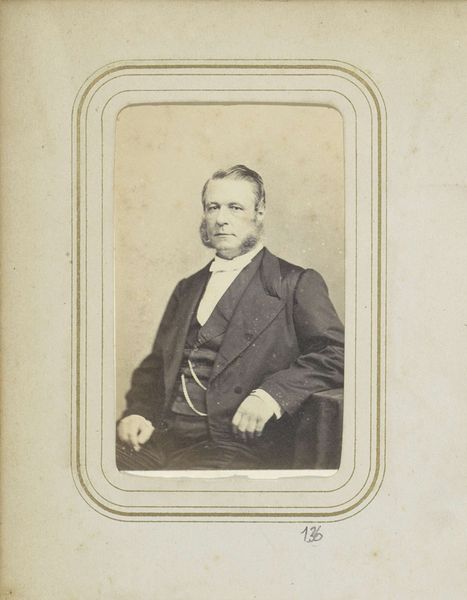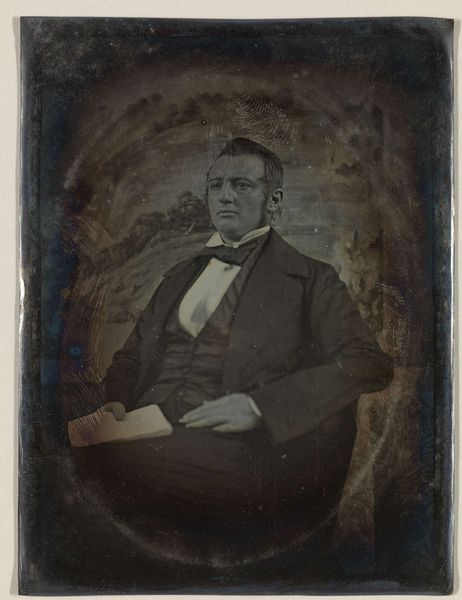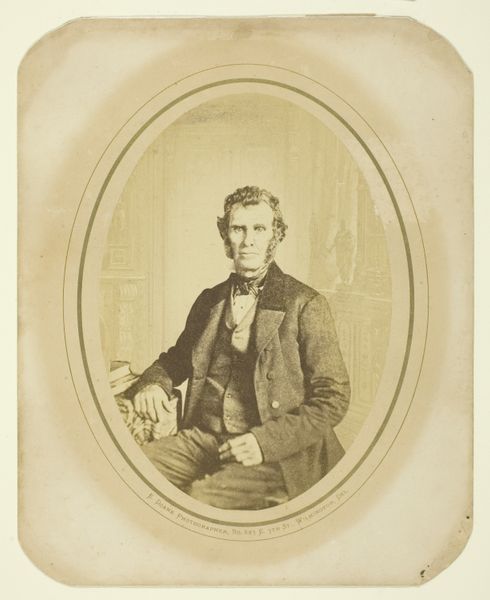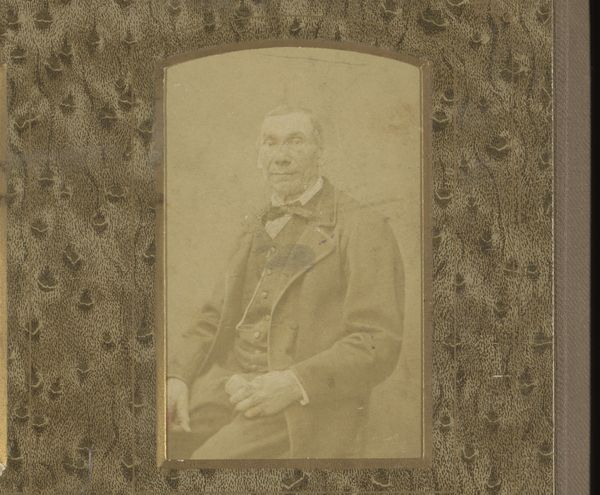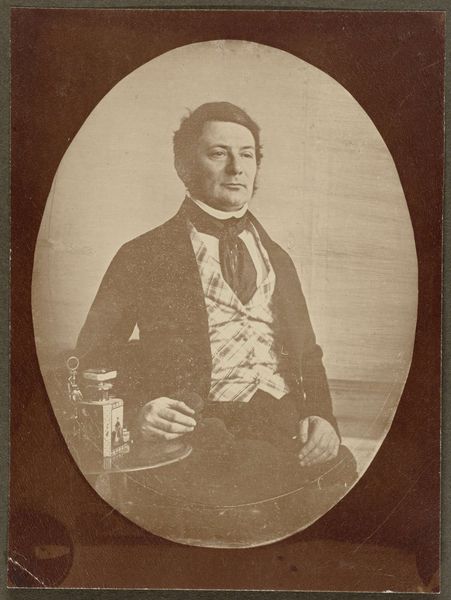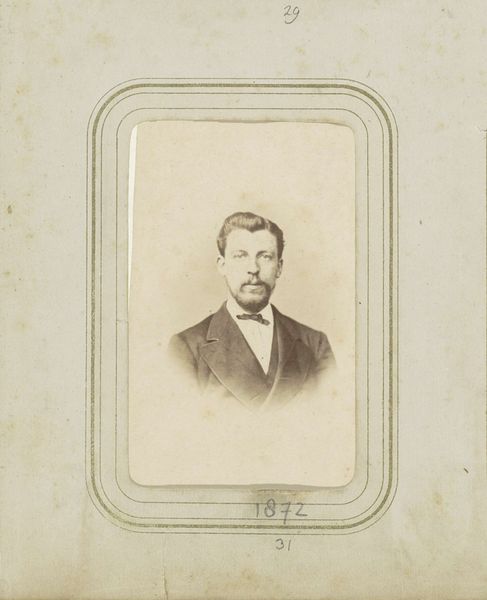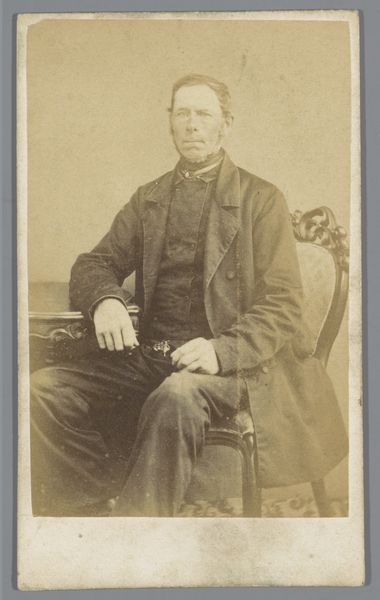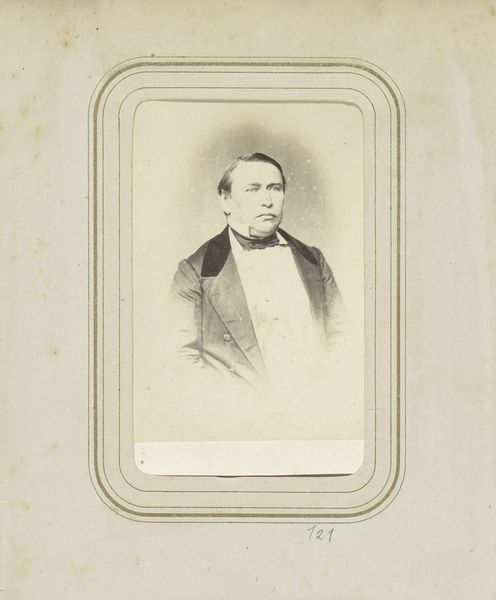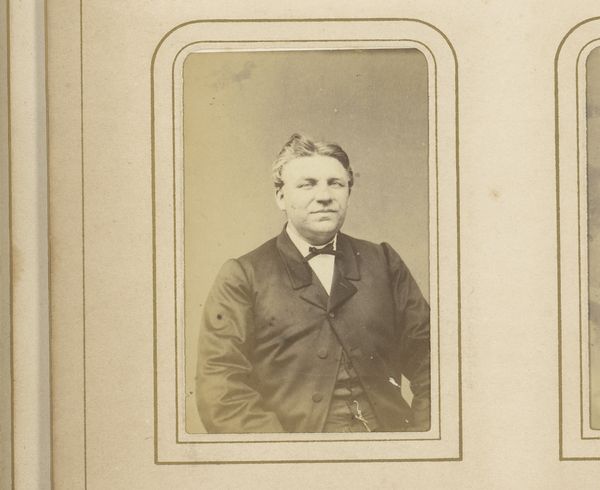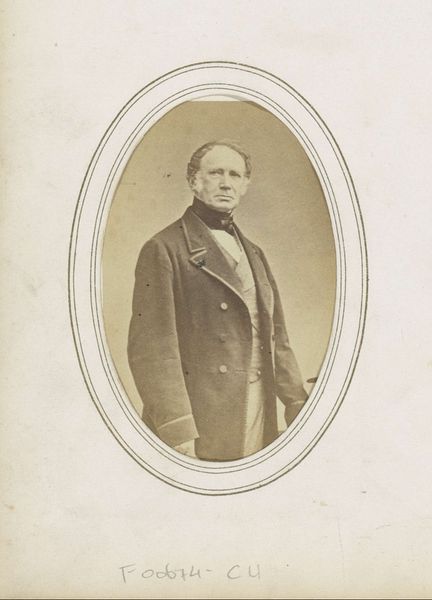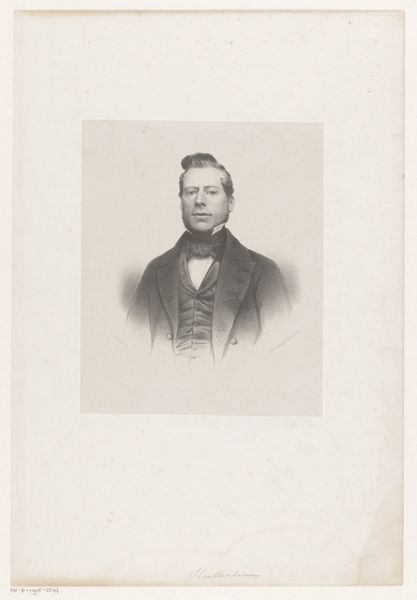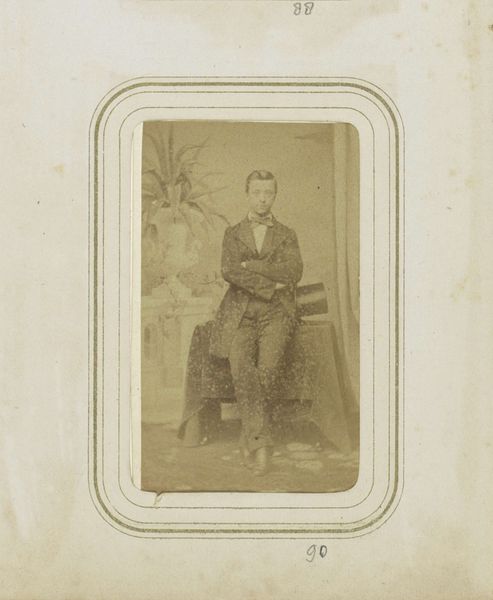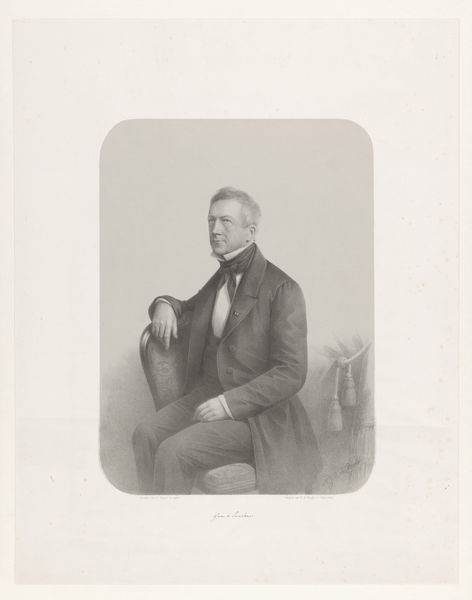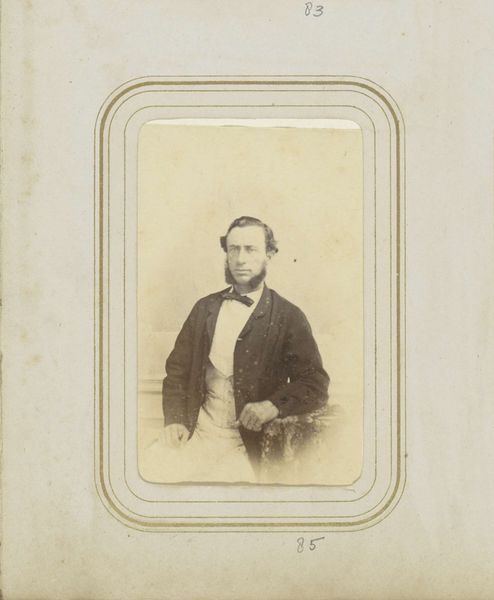
daguerreotype, photography
#
portrait
#
16_19th-century
#
daguerreotype
#
photography
#
realism
Dimensions: height 125 mm, width 101 mm, height 201 mm, width 170 mm
Copyright: Rijks Museum: Open Domain
This portrait of M. Eugene Bonfils was made using the daguerreotype process, an early form of photography involving a silvered copper plate treated with chemicals and exposed to light in a camera. The resulting image is incredibly detailed and has a mirror-like surface, a testament to the maker's mastery of chemistry and optics. Creating a daguerreotype was a labor-intensive process, requiring specialized knowledge and equipment. Each plate had to be meticulously prepared, exposed, and developed, making each image a unique, unrepeatable object. The very materiality of the image speaks to the rise of industrial capitalism. While photography democratized portraiture to some extent, the time, skill, and materials involved meant it remained a luxury for the middle classes. Looking at this image, we can see the confluence of science, art, and commerce that defined the era, reminding us that even the most innovative technologies are rooted in human skill and social context.
Comments
No comments
Be the first to comment and join the conversation on the ultimate creative platform.
